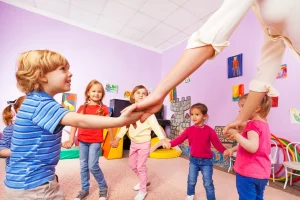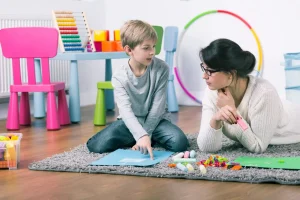Tantrums, cry spells, whining, banging of doors and toys thrown to the floor…Yes, your kids sometimes can have a hard time dealing with their emotions. But, how can you help them in that particular department?
Enter Emotional Regulation!
If you are not familiar with it, emotional regulation is the ability of a person to manage their reactions to different emotions, such as being able to think and decide what to do when faced with difficult situations or unexpected triggers. Most importantly, Emotional Regulation is an important instrument that can help your child manage their reactions and behaviors. In other words, it returns the control of your child’s emotions to him/herself, it makes them accountable for their own choices and gives them the tools they need to help them for an entire lifetime.

Here are a few important key points to have mind when teaching emotional regulation:
1. Its ok to be angry:
When a child is having an emotional reaction, we often hear people say things like:
“Don’t cry!”,
“I don’t know why you’re so upset”, or
“You have no reason to feel this way”
These types of comments invalidate the feelings that your child is having at the moment, and honestly, his/her feelings won’t go away just because you think their feelings don’t make sense.
Instead, I invite you to acknowledge their feelings, and validate them. This will help your child realize that you are on their side, that you understand them, and (most importantly) that having this type of feelings is natural. In all reality, we all go through feelings, we all cry, scream, get scared, etc. Having these types of feelings happen to everyone, and at times we all struggle and fail to manage our emotions. Remember to relay this to your kid. What is happening is natural and valid, and there is no reason to feel ashamed.
So, instead of saying “there’s no reason for you to feel that way,” let’s try: “I see that you are feeling (insert feeling here), and I understand how difficult that is. I feel like that sometimes, too”

2. Fire Drill
What is the last thing you want to hear when you are angry? I know for me its “you need to calm down!” Thanks, Sherlock! That helps a lot!
The same is true for our kiddos. Telling someone to calm down or to not be sad or scared right in the middle of the crisis very rarely will work. What should we do instead?
Fire Drills!
Try emotional regulation techniques in a non-crisis situation…and practice, practice, practice!
How do you do this? Simply identify with your child three or four things that they can do to calm down and regulate. Choose the things that they will do. This is why it’s important for your child to be present when you choose what exercises he/she will use to calm down and relax. If they like the exercises, they are more likely to do them. A few common ones are taking deep breaths, squeezing your hands 4 times, stretching, or simply asking for a break. For little ones, it helps to do visuals with representations of what they can do when they are upset or sad. Once you and your child chose which ones you will use, get to practicing. Also, as we discussed before, practice during calm times. Firefighters don’t practice how to put out fires during a real fire. They practice in non-crisis situations, and so should you. The middle of a meltdown isn’t the right time to learn. Practice daily. Include the family and practice together. Make it a fun activity! You can even role play and take turns pretending to help each other calm down.

3. Be a facilitator
The meltdowns, tantrums or cry spells will come. At this time, I want you to remember that you are the facilitator and agent of change. First, remember that you cannot help a child in a meltdown if you are upset or flustered. It is better if you take a minute to step out of the room (provided your child is safe being alone for a minute), take a moment to calm down and come back. Get their attention, remind them (as we commented on step 1) that their feelings are valid and natural. Then, invite them to use their calm down techniques. At first, they will reject the idea, and that is ok. You will only suggest it and offer to help. If they reject the calm down techniques that you practiced, then give them a few minutes to calm down. Don’t crowd, don’t restrain physically (unless they are hurting others or themselves) and don’t give speeches. As a matter of fact, don’t talk. Over time, kids tend to use their calm down techniques by themselves, without being obligated to do so, simply by suggesting.
Many times, you must change and rethink the calm down techniques you use, and that is ok. Change them until your child finds a few exercises that they like and will want to do when upset.
Emotional regulation is a skill that your child will use throughout his/her entire life. It will be used in all types of situations and will prove to be invaluable throughout many aspects. Investing time and effort to help your kids these important tools will have benefits that will last throughout their lives.



